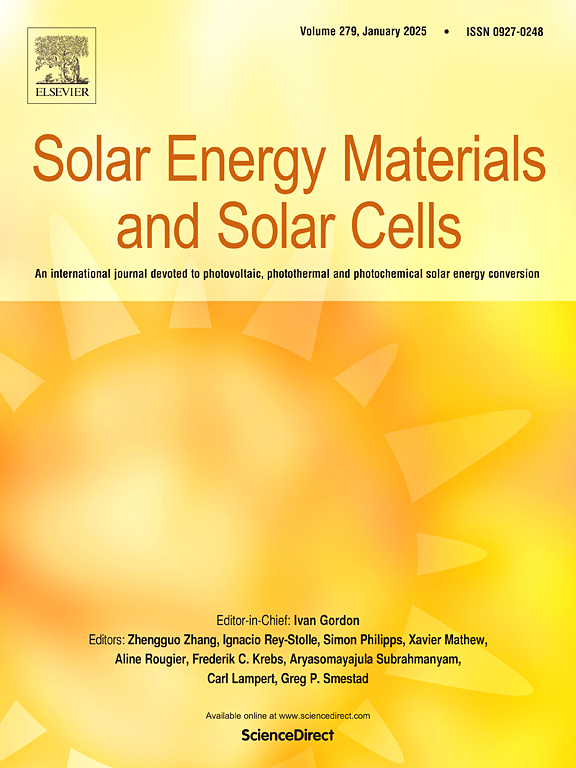Comprehensive analysis of forced convection heat transfer enhanced by metal foam with pore density gradient structure
IF 6.3
2区 材料科学
Q2 ENERGY & FUELS
引用次数: 0
Abstract
Metal foam, characterized by its large specific surface area, remarkable thermal and mechanical properties, is often used for heat dissipation in solar panels and solar energy storage systems. To address the pressure drop associated with the application of metal foam, eight foam metal composite structures with different pore gradient structures were developed. This study used computational fluid dynamics to analyze the heat transfer performance of structures with identical porosity but varying gradients. Results showed that gradient structures significantly reduce flow resistance. When high porosity metal foam occupies 20 %–80 % of the heat exchange section, the average pressure drop decreases by 17.2 %, 13.0 %, 8.7 %, and 4.7 % compared to uniform high porosity metal foam. The optimal configuration is 20 % low porosity and 80 % high porosity, with airflow performing better in the negative gradient direction. Practically, combining 10PPI and 20PPI allows for choosing either 20 % low porosity with 80 % high porosity or 40 % low porosity with 60 % high porosity. This study may offer a novel approach for heat exchange in solar energy applications.
求助全文
约1分钟内获得全文
求助全文
来源期刊

Solar Energy Materials and Solar Cells
工程技术-材料科学:综合
CiteScore
12.60
自引率
11.60%
发文量
513
审稿时长
47 days
期刊介绍:
Solar Energy Materials & Solar Cells is intended as a vehicle for the dissemination of research results on materials science and technology related to photovoltaic, photothermal and photoelectrochemical solar energy conversion. Materials science is taken in the broadest possible sense and encompasses physics, chemistry, optics, materials fabrication and analysis for all types of materials.
 求助内容:
求助内容: 应助结果提醒方式:
应助结果提醒方式:


